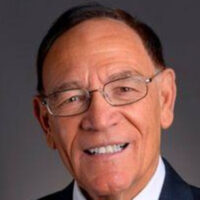Creating an equitable system of public education will require polices that advance whole system, whole community, and whole student solutions. In 1974, Supreme Court Justice Thurgood Marshall argued in his dissent to Milliken v. Bradley that it is “the right of all our children, whatever their race, to an equal start in life and to an equal opportunity to reach their full potential as citizens.”
The majority’s decision halted court-ordered school desegregation between Detroit and its neighboring suburban districts. This not only undercuts the power of a key remedy to segregation identified in Brown v. Board of Education, it also set the stage for supporting white flight from the cities. In his dissent, Justice Marshal stated unequivocally that “Those children who have been denied that right in the past deserve better than to see fences thrown up to deny them that right in the future.”
Those children who have been denied that right in the past deserve better than to see fences thrown up to deny them that right in the future.
But today, all evidence reveals that it is virtually impossible to provide Black, Brown, and Native American children a fair opportunity to achieve their full potential without significantly addressing the broader systemic inequities. Their living inequities—the fences that bar them from success—have become so drastic that it is impossible to systemically decouple them from their learning disparities. As data show, racial inequities like access to healthcare, affordable housing, and healthy food make as much (if not more in some cases) of an impact on Black, Brown, and Native students’ educational outcomes than the education factors themselves. And yet while these inequities more pervasively impact students of color, they impact all students while undermining our democracy, economy, and humanity.
There is great urgency to support a dramatic shift in our education policies and system to address these needs and close achievement gaps exposed and exacerbated by the COVID-19 pandemic. Moreover, we also face the fences of two challenging realities. One is political. At a time when communities of color have gained access to local decision makers about what is best for their children and are able to influence education and the resources to educate their children through local empowerment and strengthening local control, state leaders (primarily conservative governors and legislators) are finding ways to eradicate local power and diminish local equity voices through state intervention. 12 State initiatives, such as district takeovers, book banning, curricula restrictions (framed as opposition to Critical Race Theory), and various other measures that limit local control, have never been about producing citizens of color with all the rights and powers that go along with it.
The second impinging reality is demographic and economic. Too often, family wealth and ZIP code determine social and economic mobility. While the quality of a school is a factor related to student success, researchers such as the Harvard economist Raj Chetty have made clear that the neighborhood where a child grows up is perhaps the chief determinant of that child’s social and economic mobility. Even good schools and good teachers cannot outweigh the level of residential segregation, the neighborhood’s social capital, the stability of that child’s family, and the neighborhood’s level of poverty.
America’s Historic Promise
The United States has experienced—and is still reeling from—inequitable treatment of racial and ethnic groups since before its founding, from brutality against Native Americans and the slave trade that started in 1619 to the Jim Crow Laws of the ‘50s and ‘60s and tragic state-sponsored violence. Through these times, equal public education opportunity made some strides, but they have often been elusive, sporadic, and met with periods of strong backlash. But the nation has thrived when it has followed an arc that leads toward social justice. The abolitionist movement and the Underground Railroad, the march on Washington in 1963 to secure the Civil Rights and Voting Rights Acts—these and other efforts have shown us that average citizens can work together to unfetter large segments of the population and create opportunity for all.
Our challenge is to harness the energy of individuals who have stood up against injustice to advance policy change to establish a more equitable and just ecosystem for children’s learning and family wellbeing.
Step One: Assessing conditions of our systems to address student needs
To move forward, we need to avoid the policy sideshows of the past: vouchers, private and for-profit charter schools, no excuses for education, competition, choice, high-stakes standardized testing, and student push-out tactics. These elements all represent subsets of the technical or “educentric” aspects of education, while often shifting attention away from the human and relationship-building elements of education, which includes addressing the health and wellness and social development needs of students and families.
Responding to COVID-19 has already encouraged many schools to break out of key barriers of educentric education. We need to make a dramatic shift from the factory model of learning in which students are expected to learn the same thing at the same rate. Such a system, built around standardized testing policy and traditional Carnegie units and teaching methods, is anathema to a student-centric model that works as people learn best—by meeting students where they are, encouraging them to engage in rich content that is relevant and engaging, and building on what they know while supporting their individual needs.
For the first time, rather than test and blame our students if they fail, we must assess the conditions of our systems.
For the first time, rather than test and blame our students if they fail, we must assess the conditions of our systems. It is time to recalibrate the technical side of education and merge it with social and emotional learning, trauma-informed services, developing strategies for instructional loss, and reimagining what an equitable education might look like—completely different from the current system.
To that end, the Schott Foundation for Public Education in 2018 proffered the Loving Cities Index as a way for state and local decision makers to better assess their systems. The index assesses the degree to which communities, through their systems, were showing love, care, capacity, and stability to all their children and families. It provides a dashboard for districts to look at the whole system and whole child, identifying the cross-sector supports (education, housing, health, transportation, etc.) necessary for students to have an opportunity to learn and thrive.
To date, Schott has developed profiles for 20 cities, and none offered over 55% of the systemic supports needed for all children to thrive.
Step Two: Focus on the Whole System and the Whole Child
Aligned with the Index, we need a new vision for the education of children that considers the whole child within the context of the ecosystems or communities in which they live. It takes a healthy living and learning environment to provide all students a fair and substantive opportunity to learn.
In this scenario, public schools are the connective tissue to the ecosystem. Schools hold all the other pieces—and democracy—together, assuring an adequate and equitable education and life skills for all students and becoming the center of the community itself. Schools become the central place that can strengthen relationships between the home and school, between parents and teachers, between community and the common good.
Just as in rural communities and smaller school districts, where schools meet the needs of students in deep poverty by providing meals and a safe place to be, schools can also be the place to support students who:
- face food or housing insecurity,
- are engaged with the foster care system,
- are suspended or need juvenile justice advocacy,
- lack internet access,
- have special education needs or language barriers, or
- have family members who are victims of the opioid epidemic.
The work of the school extends beyond the school building and school system. It provides comprehensive services to neighborhoods to effectively combat poverty and respond to the needs of the whole child. These services include high-quality education and cradle-to-career youth programming, physical and mental health support, workforce development, affordable housing, and community leadership.
Because of these broad roles, planning systemic changes for urban or rural schooling requires the entire community to respond to the demographic changes that affect them.17
Not a return to normal
Too often, policymakers and politicians set expectations for students. Now is the time to set expectations for those who chart the course of state and federal policy.
To bring our country together, we need a national plan for addressing challenges that affect education and equity that can emerge from any number of activities. We can start with national conversations about race, policing, discipline, and/or criminal justice reform. Or we can focus on achieving crucial goals, such as establishing a diverse teaching profession, college affordability, and/or empowered engagement of low-income and minority parents. And we can listen to young people themselves as part of a focus on student voice through advisory councils or a national commission on children and youth.
That is because education is not solely focused on formal schooling. It thrives through public discussion, debate, controversy, transparency, and freely sharing reliable information.
We need lawmakers and voters to work together to advance the public interest, addressing the needs of all and focusing on the common good. It’s time to tear down the fences that have held back our economically marginalized and Black, Brown, and Native-American students to ensure that every child receives a quality public education that prepares them for citizenship and the world of work.
Once and for all, our education system must become “the balance wheel of society” and “the great equalizer.” We can work together to transform our education system to move another generation of young people into the middle class and expand opportunities for all our students and families.
References
Milliken v. Bradley, 418 U.S. 717, 783 (1974), Justice Thurgood Marshall in dissent Derek W. Black (Academic Year 2018-2019) Public Education as a Fundamental Right. Notre Dame law Review Vol. 94-3
The Impact of COVID-19 on Student equity and inclusion: Supporting on vulnerable students during school closures (November 19, 2020) The Organization for Economic Development (OECD)
COVID-19 and learning loss- disparities grow and students need help (December 8, 2020) Emma Dorn, Bryan Hancock, Jimmy Sartakatsannis and Ellen Viruleg. McKinsey and Company
Paul Reville (April 24, 2015) How to create a new K-12 engine. Education Week
Morel, Domingo. Takeover: Race, Education and American Democracy. Oxford University Press, New York, New York, 2018.
Linda Darling-Hammond and Channa M Cook-Harvey (September 2018) Educating the Whole Child: Improving School Climate to Support Student Success. Learning Policy Institute (LPI)
Richard V Reeves and Eleanor Krause (January 11, 2018) Raj Chetty in 14 charts: Big findings on opportunity and mobility we should all know. Equality of Opportunity Project, Harvard University, presented at the Brookings Institution
David Fontana (August 8, 2021) America’s Hidden Crisis of Power and Place, Washington Post Magazine. Using demographic data from the American Community Survey, the author traces those places in the US where power exists—proving that place and power are related, and that those with professional or graduate degrees are the people most likely to move to the few “places” known as power cities
Whole School, Whole Community, Whole Child from CDC program on healthy schools (March 2021) https://www.cdc.gov/healthyschools/wscc/
Andre M. Perry (2020) Know Your Price: Valuing Black Lives and Property in American Cities. Brookings Institution Press
© Cognia Inc.
This article may be republished or reproduced in accordance with The Source Copyright Policy.
The information in this article is given to the reader with the understanding that neither the author nor Cognia is in engaged in rendering any legal or business advice to the user or general public. The views, thoughts, and opinions expressed in this article belong solely to the author(s), and do not necessarily reflect the official policy or position of Cognia, the author’s employer, organization, or other group or individual.


